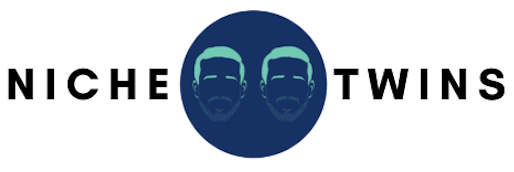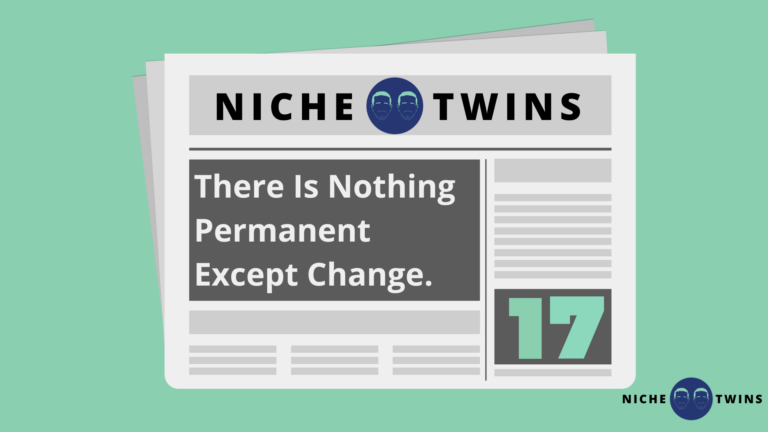It’s been said many times and many ways that Google is bipolar.
She loves me, she loves me not. Google giveth and Google taketh away.
And there’s plenty of truth in that. I know. Last week I shared that my site, TheFlexibleWorker.com, has been stuck on Google’s bipolar roller coaster for the past 18 months.
Does Big G always serve the highest quality content? Of course not. We all know countless examples of thin, garbage content that sit on top of the SERP pile.
But directionally speaking, on net, Google surfaces what the searcher is looking for. This becomes clear when looking at sites on extreme ends of the quality spectrum.
Established, branded sites with multiple reasons to exist beyond JUST driving organic traffic will maintain stability.
Cookie cutter niche sites like mine will get taken for a ride.
So changes are needed. But what changes and how?
Up until now, I’ve split my strategy into two primary buckets:
- Near-term, easy(ish) updates
- Long-term, hard updates
Here are the top five, bucket #1 changes I’ve made over the past few months…
Link Building
I’d largely ignored link building all together.
As a result, The Flexible Worker has spent nearly the entirety of its existence with a Domain Rating of 1 or 2.
And yes, plenty of sites pull in significant traffic with low single digit DRs – happens all the time.
SEOs will argue until they’re blue in the face about exactly how much Domain Ratings matter, but the bottom line is: links matter.
It also matters how you acquire them.
Mike learned this the hard way when a service he was working with was buying links on his behalf. His reward? A manual penalty from Google for “unnatural inbound links to some pages”.
So naturally, we’ve grown extremely skeptical of the entire link building industry.
Until we met with the team at LinkiFi (you can check them out HERE).
They walked us through their approach to building white-hat, high quality HARO links.
A few months ago, we decided to trust them with all three of our sites and they’ve delivered exactly as advertised.*
My site had gone 16 months without ever landing a single DR50+ DR backlink.
In just 2 months, LinkiFi landed links with DR67, DR73, DR76 and DR82 sites. Not to mention a highly relevant DR90 nofollow and a bunch of high DR unlinked mentions.
Collectively, these all represent little votes of confidence to Google that are finally starting to move the needle…

*As a side note, Linkifi is now the ONLY link building service that Mike and I recommend. We are actively working with the their team on a promo for Niche Twin subscribers, so be on the lookout for this in the coming weeks.
Content Pruning
A significant part of my site revival strategy is also centered around strategically deleting posts.
At one point, I had published a total of 162 posts. Today I’m down to 91.
I axed posts that covered topics too far outside of my topical authority sphere, as well as several posts that never pulled in a meaningful number of monthly pageviews.
It’s important to acknowledge that a significant percentage of these articles include Brand Swapping clusters.
The hope here is that any negative detractors applied to the site will be removed over time by removing what Google may view as “duplicate content”.
Updating Old Content
Rewording brand swapped articles also plays a role in minimizing the overall percentage of duplicate content.
But the truth is, duplicate content aside, I’ve slept on updating old content for far too long.
My content verticals target tech products –- products that are constantly evolving.
The content covering these verticals is not evergreen. That means more frequent updates are flat out necessary to ensure these posts are maximumly helpful and relevant.
Updating Categories
Until recently, I had just two category pages for ALL of the content on my site: “Guides” and “How-to”.
Determining whether to assign a post to one versus the other has been a totally arbitrary process.
I honestly don’t know why or how I even decided on this – just one of those cases where I implemented it from the jump and never looked back.
The vast majority of people who encounter a tech- related issue go straight to Google, search for the solution, and once they get it, they bounce.
So in my case, creating more logical category pages is not really meant to help readers.
Instead, I made this change to (hopefully) help search engines better understand the relationship between the different pieces of content and how they fit together.

Improving Site Performance
In general, I think site owners assign far too much weight to site speed.
I’m talking about the people spending hours tinkering just to go from a 98 to a 99. Not a great ROI on your time.
That said, it is definitely worth taking the time to get your Core Web Vitals into the green.
Initially, this seemed impossible with Ezoic. So much so that I removed ads from my site all together for many months.
But sometime in April I switched out my WordPress theme to GeneratePress, set up a bunch of ad restrictions (removed all above the fold ad, set maximum ads per post by word count, etc.) and pretty much begged the Ezoic support team to configure Leap.
So far, so good.

Did one of these changes contribute to the recent bump? All of them? None of them?
No way to know.
Here’s one thing I’m confident of: The Flexible Worker will continue to get swept up in the bipolar roller coaster unless a few more SIGNIFICANT changes are made.
That brings us to the ominous “bucket #2” updates.
More on that next week…
For now I’m off to a bachelor party in Montana to act like I’m in my 20s again.
Pray for me.
Have a weekend! ✌
-Keith

Niche Twins newsletter sent weekly on Fridays at 8:30 AM ET


